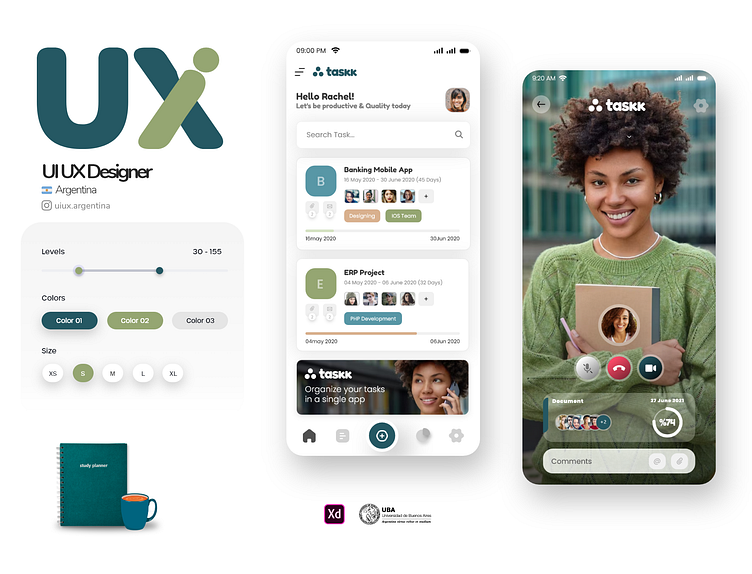Task app design
Hey Dribbblers 👋
Here is the new concept App. Press "L" if you like it ❤️
We are open to new projects!
The Paramount Importance of UI Design in a Daily Task Organization App
In the fast-paced world of today, a daily task organization app is a vital tool for time management and productivity. A well-crafted User Interface (UI) plays a pivotal role in ensuring the app’s success by enhancing user experience. Below are some key aspects that highlight the importance of an effective UI design in such apps:
1. Intuitiveness and Learnability
An intuitive UI design ensures that users can easily understand and navigate through the app without much effort. The design elements such as icons, buttons, and menus should be self-explanatory. This minimizes the learning curve and allows users to quickly adopt the app in their daily routine.
2. Efficiency and Task Completion
A daily task organization app should streamline the process of adding, editing, and tracking tasks. Efficient UI design employs a clear hierarchy, grid systems, and visual cues to facilitate rapid task completion. This efficiency is critical for users who rely on the app to manage their time effectively.
3. Accessibility and Inclusiveness
A good UI design is inclusive, catering to the diverse user base, including those with disabilities. Employing color contrasts, text size options, and voice commands ensures that the app is accessible to everyone, irrespective of their physical or cognitive abilities.
4. Consistency and Familiarity
Consistency in UI elements like typography, color schemes, and buttons ensures familiarity, which in turn builds user trust. Adopting common design patterns and principles, such as Material Design or Apple’s Human Interface Guidelines, helps in achieving a unified look and feel across different platforms.
5. Feedback and Interaction
An interactive UI keeps users engaged. By providing immediate feedback through notifications or haptic responses, the app can communicate with the user effectively. This feedback loop is essential in letting users know that their actions have been registered and processed.
6. Customization and Personalization
Allowing users to personalize the app by choosing themes, fonts, and layouts helps in creating a sense of ownership. A UI that adapts to user preferences can significantly increase user retention and satisfaction.
7. Aesthetics and Minimalism
A visually appealing UI is more likely to attract and retain users. However, it’s crucial to strike a balance between aesthetics and functionality. A minimalist design approach, focusing on essentials, aids in reducing cognitive load and distractions.
8. Scalability and Adaptability
As user needs evolve, so should the UI. A scalable UI design accommodates new features and adjustments without compromising the user experience. Responsive design ensures that the app adapts to various screen sizes and resolutions.
In conclusion, an effective UI design in a daily task organization app is fundamental in ensuring usability, efficiency, accessibility, and user satisfaction. It involves a thoughtful arrangement of visual elements, interactions, and functionalities that facilitate the seamless management of daily tasks.

